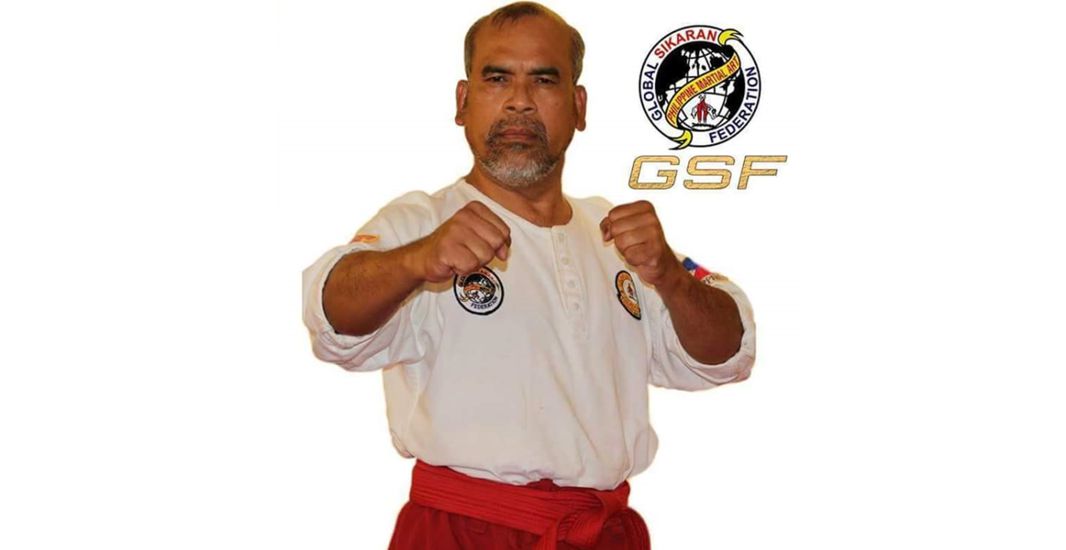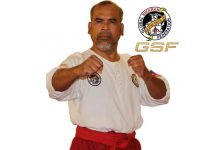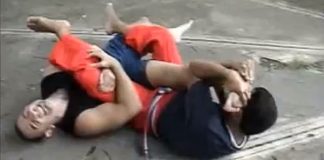FILIPINOS, before the arrival of the Spaniards, had their own sports. Notable among these were, Patintero (no word in English) Tago Taguan (hide and seek) Karera ng Bangka (boat regatta), buno sa Tubig (water wrestling), Sabuyan ng Putik mud flip), among others.
The word Sikaran was derived from the word ‘sikad’, meaning kick. Sikaran originated from what are now known as Baras, Tanay and Morong towns in the Rizal province. In Morong, the ancients called the sport Paninggara (accent on the last syllable), an old Tagalog term, which also means kick fighting.
Sikaran was first developed by farmers to pass away the twilight hours after a long, hard day in the fields, and to entertain their town mates. It eventually developed into a martial art during the Spaniard conquest, when it was later suppressed.
The players began by marking a round area a few feet in diameter, to contenders enter the ring and slug it out with their feet, while the audience, made up of young and old fun loving folk, encouraged them with cheers. Whoever ran away first or was first to go down was the loser.
The champion was called a hari, meaning king. Being hari was by no means easy because he could always be challenged. A champion was expected to defend his title at all times. As the sport developed, the rules made it harder from the champion by setting handicaps while allowing his challengers all advantages possible.
Among the handicaps was one in which the hari would stay inside the arena, 6’ to 8’ in diameter and could not go beyond the perimeter. He would have two to three opponents, however, could attack him from the inside or outside the line and enter or withdraw from the arena. Old timers assert that one had to be good to remain a hari in this type of competition.
Another was done on a stairway. The challengers would be up on top of the stairs while the hari would try to dislodge them. If he succeeded, he went up another notch. The number of challengers would eventually dwindle, however.
When the Spaniards came, the sport had already been played for several generations. Techniques were handed down from father or mother, to son or daughter and refined new rules were made the impractical ones discarded.
The primary rules that have withstood the generations of change are the ones that gave the sport its name. Only the feet are used for fighting and the hands used only for grabbing, throwing, parrying or blocking. Up to the present, fighting techniques are still being developed without changing rules by those who would keep sports as pure and original as possible within the modern international contest.
The two attacks of the foot fighting art are: The Pilatik, (panghilo or paralyzing) and Patusok (pamatay or lethal thrust). The pilatik is aimed at less vital parts of the body, while the patusok is directed at the heart, neck, head, groin and spine.
The major kick of the foot fighting art is called the Biakid or sickle kick. Biakid is a kick where the center of the force is at the back of the heel. It is the most powerful kick, it could be delivered at all angles and is controlled by the largest muscles that run down the body, which are the hip, thigh and legs to the heel and the ball. Sikaran, played as a sport and can use for self-defense.
According to the old timers, sikaran champions themselves who learned its history from their elders; the 18th century saw the suppression of sikaran by the Spaniards due to rumors of an impending revolution. Sikaran then went underground, but it survived to produce the generation of proponents at the turn of the century.
A surviving hari, FRANCISCO TORRES y Escorpion of Baras, recounts that the American takeover of the country did even more harm to the sport by the introduction of boxing to the country’s youth. Their own children looked to the new sport and left sikaran to stagnate and all but die a natural death.
However, the old timers continued to play in the fields, reviving the interest among fellow-farmers in Rizal, even if the youth now disdained the sport in favor of boxing, and foreign inspired martial arts. The old haris found themselves bereft heirs to whom they could bequeath the techniques of the sport.
Now 98 years old, Torres is one of the very few surviving haris. Others are Emiliano Ballesteros and Demetrio Ramos, both from Baras, and Jose Gonzales from Morong. All the rest have passed away in the intervening years.
Among the great sikaran players, Perfecto Ballesteros gained province-wide recognition as “Agila” for his style of padamba, or flying kick, which was reportedly delivered with tremendous power, at an extraordinary height of 10 feet. Another, Alfonso Tesoro, likewise an undisputed hari, could crack coconuts with bare shins and is said to have acquired the hardness of steel. Casteneda was reported to have killed a carabao with a single biakid, the same way he used to dispose of opponents in the arena. He wound up without challengers eventually.
Although these men died of old age, they had no chance to teach the next generation, and left no legacy. Indeed, surviving old timers watched helplessly while their favorite sport, a product of centuries, slowly faded away to give way to “modern” martial arts from Korea, Japan, China, Indonesia and Thailand.
Torres mentions women who played sikaran, contemporaries who were no less mean players than the men. Acquiring hari status were Segunda Jimenez, Maxima Capmo and Marcela Llagas, who would enter the arena with their skirts bound like G-strings above their knees. “They could deliver some very powerful and painful kicks. They took courage to get in there and face these women,” Torres muses.
A young man, OSIAS BANAAG y Catolos, had his beginning in karate, but abandoned this to concentrate on sikaran and refining his techiniques in his ancestors’ sport. In 1976, Banaag established the Foremost (meaning first) Sikaran-Arnis Brotherhood and has since been its’ most dedicated practitioner.
Mainly through his tireless efforts, sikaran has now regained the interest of many young people, a good number of whom have become his students. He espoused the study of sikaran in two unit of Military Light Armod Brigade and Army Honor Guard are both in Fort Bonifacio, Makati, City and for security guards at the Manuela I and II (las Pinas) Shopping Complex, on the third floor of Manuela Complex (EDSA) Crossing which established the Sikaran-Arnis Gym. Banaag’s efforts paid off. Having garnered (6th) sixth degree status in Karate, he attracted the attention of Hari Francisco Torres who recently conferred upon Banaag the status of hari, symbolizing his mastery of the sport.
No one can confer hari status except another hari, as part of the legacy he leaves behind when he retires from active participation in the sport. The conferment on Banaag is his first between hari and one who is not his own son. This was in recognition of Banaag’s efforts not only for being a top sikaran player, but also for using his own meager resources to nurture and spread it not only in the Philippines, all over the world.
As Torres’s heir, Osias Banaag has an edge over his colleagues. The old man has committed to teaching Banaag his own techniques as much as his old bones will permit. Banaag, for his part, has sworn to uphold the high values of sportsmanship espoused by sikaran and pass on to the younger generations all the knowledge he has acquired. Thus, sikaran is restored to its rightful place as part of Filipino heritage.
By Mitos Garcia







